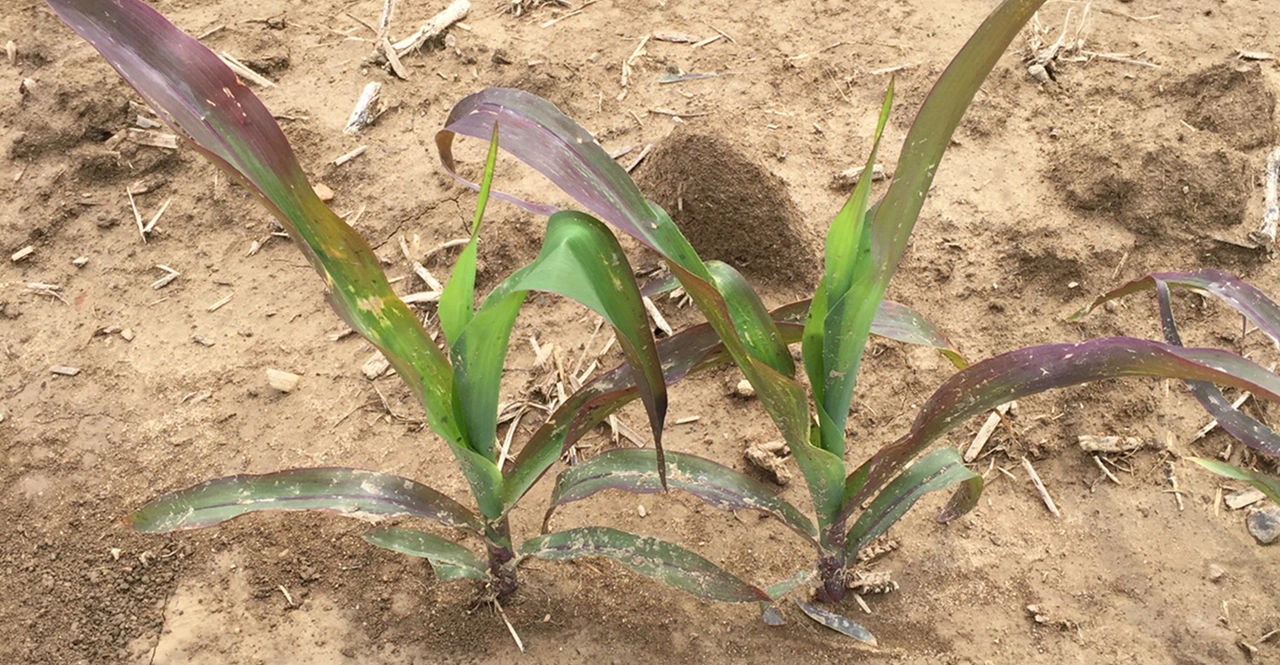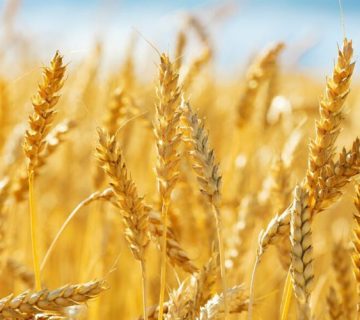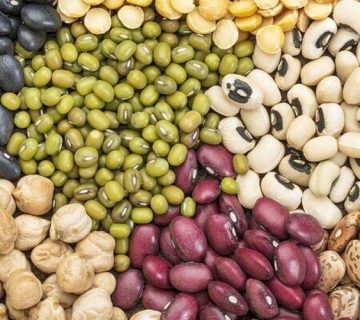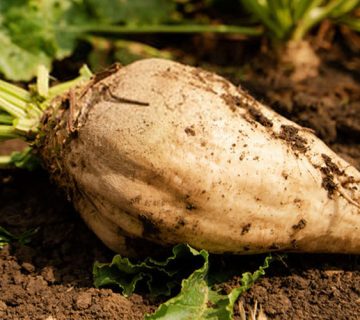Macro-N (nitrogen) deficiency
Nitrogen deficiency in corn is manifested by characteristic morphological and structural changes. Older leaves initially turn pale greenish-yellow, spreading in a V-shaped band along the midrib toward the base. Severe deficiency causes brown, dead tissue in the yellowed areas, starting at the leaf tip. The plant is stunted with thin, weak stems that may turn reddish in advanced stages.
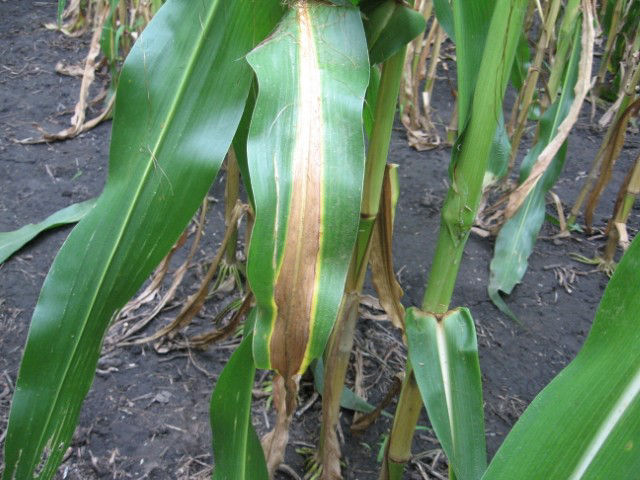 |
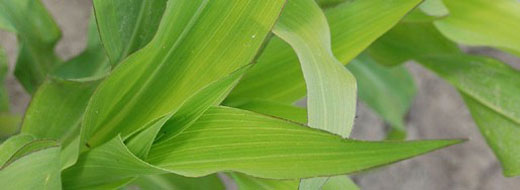 |
Kimat’s proposed solution:
Macro-P (phosphorus) deficiency
Phosphorus deficiency mainly affects young corn plants. Purple-red colors appear on the leaf margins, veins, and stems, often extending across the entire leaf blade. The dark green foliage contrasts with the purple discoloration, especially in young plants.
Kimat’s proposed solution:
Macro-K (Potassium) deficiency
Potassium deficiency manifests itself through characteristic leaf and plant growth abnormalities and primarily affects older leaves due to the movement of potassium within the plant. Yellowing to necrosis begins at the leaf tip and progresses along the outer margins toward the base. Leaf curling and discoloration of the leaves to pale yellow and brown at the margins and the development of a necrotic tissue that begins at the tips of older leaves.
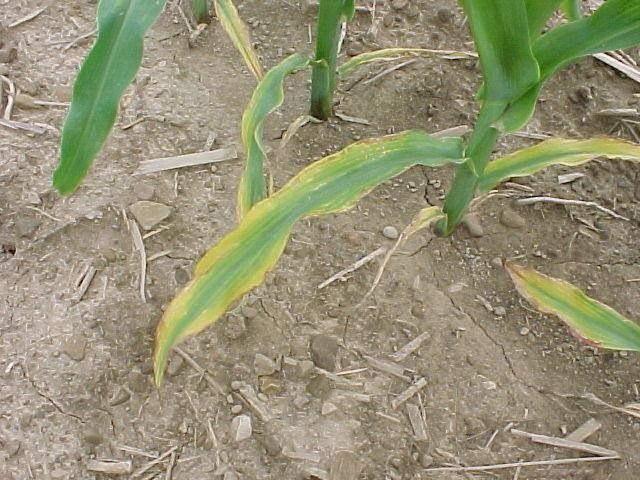 |
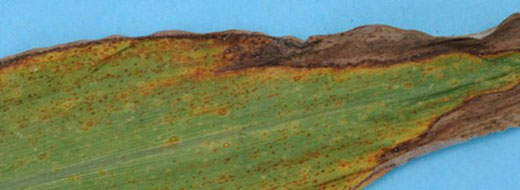 |
Kimat’s proposed solution:
Secondary macronutrient deficiency – Magnesium (Mg)
Magnesium deficiency in corn is particularly common in acidic, sandy soils or soils with low organic matter and has a direct impact on photosynthesis and plant health due to magnesium’s key role in chlorophyll synthesis. Magnesium deficiency primarily affects older, lower leaves. Yellow or white streaks appear between leaf veins, starting in older leaves. Severe deficiencies cause reddish-purple pigmentation, especially under prolonged stress conditions.
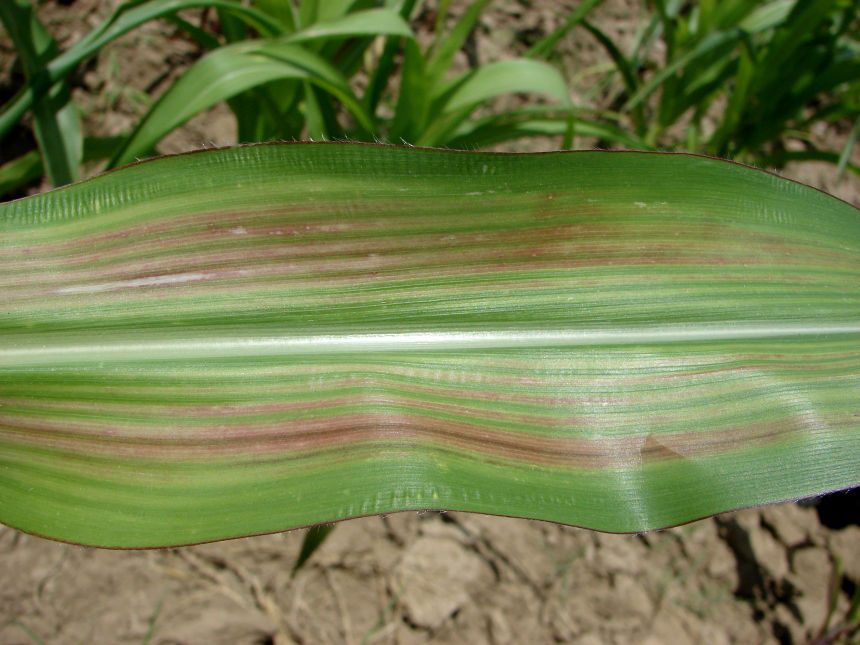 |
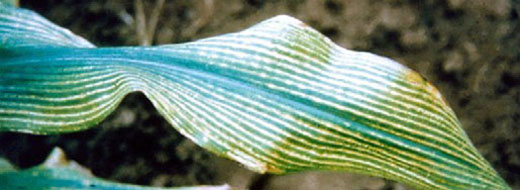 |
Kimat’s proposed solution:
Micronutrient deficiency – Manganese (Mn)
Manganese deficiency in corn usually occurs in alkaline (high pH), sandy or calcareous soils with low organic matter and has a direct impact on plant growth and yield due to the element’s role in enzymatic processes and photosynthesis. Yellow or white streaks appear between leaf veins while the veins remain green, creating a striped appearance.
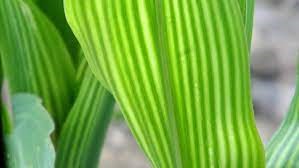
Kimat’s proposed solution:
Micronutrient deficiency – Boron (B)
Boron deficiency in corn is less common than in some other plants, but when it occurs, it has significant effects on plant growth and yield. Boron plays a key role in cell division, cell wall formation, and sugar transport. Reduced internodal growth and short stems result in a “broomstick” appearance. Small dead spots appear on young and middle leaves, especially under drought stress. Boron deficiency also causes reduced grain number, small ears, and irregular grain arrangement.
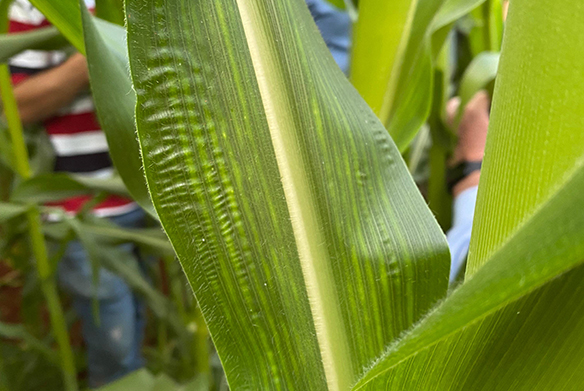 |
 |
Kimat’s proposed solution:
Secondary macronutrient deficiency – Calcium (Ca)
Calcium deficiency in corn is rare, but can occur in acidic, sandy soils or areas with heavy rainfall where calcium is leached. Symptoms of calcium deficiency include light green and white spots, shortened stems, deformed spikes, and small ears.
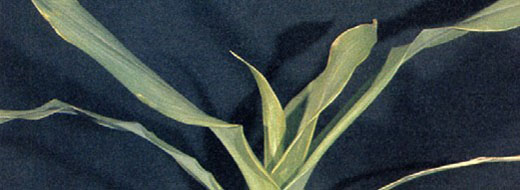
Kimat’s proposed solution:
Micronutrient deficiency – zinc (Zn)
Zinc (Zn) deficiency in maize is particularly common in alkaline (high pH), sandy, calcareous or low organic matter soils and has a direct impact on growth, yield and grain quality. In young leaves, yellow stripes parallel to the main vein start at the base of the leaves and progress towards the tip, while the leaf margin and veins remain green. In severe deficiency, young leaves turn completely white or yellow.
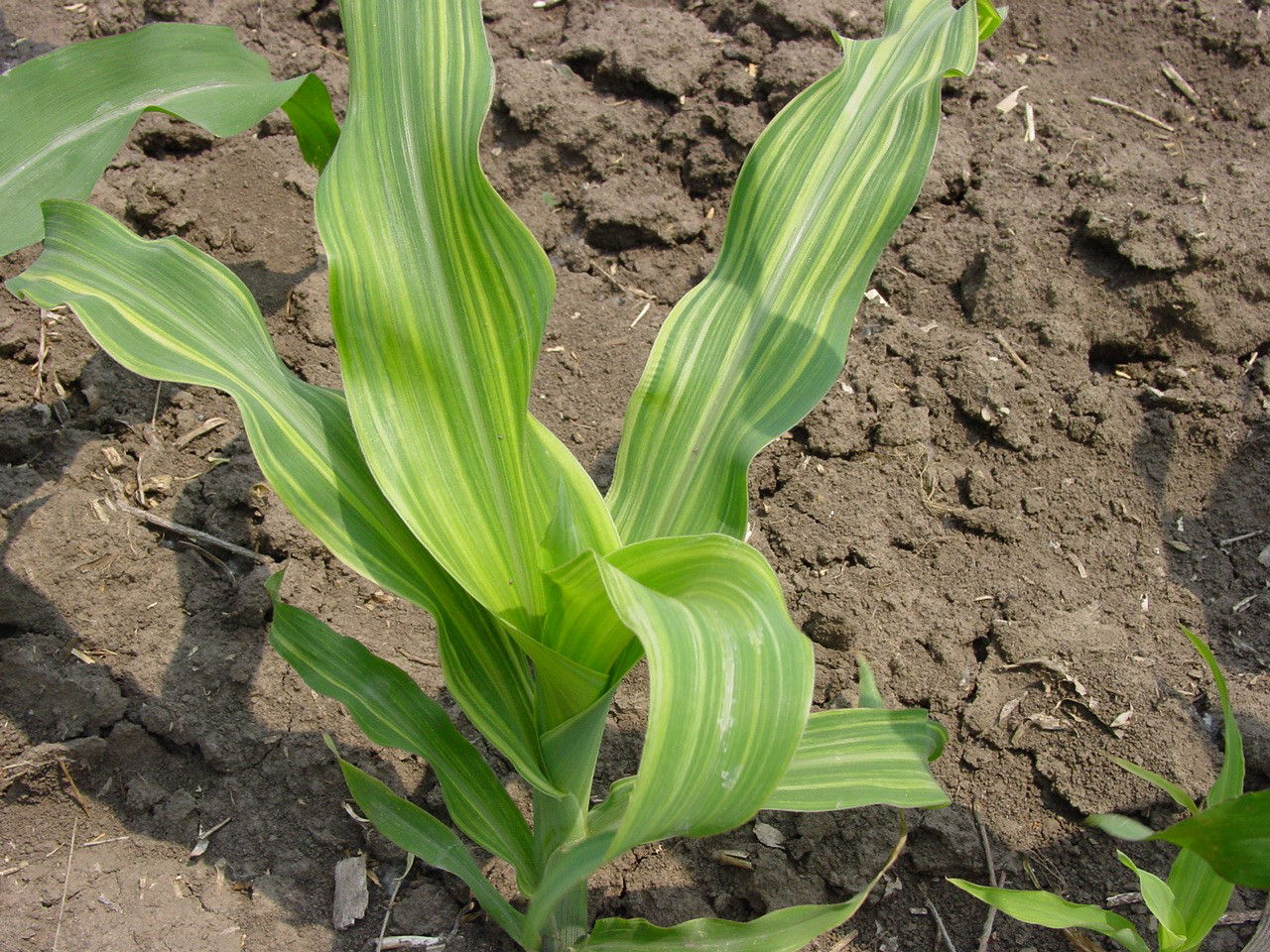 |
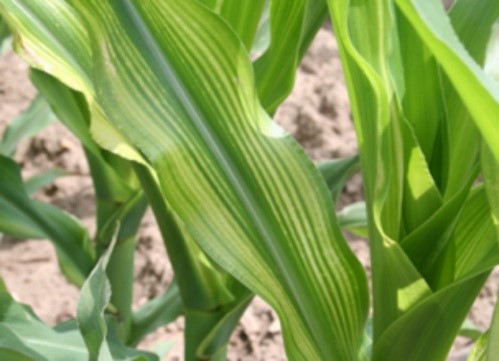 |
Kimat’s proposed solution:
Microelement deficiency – Copper (Cu)
Copper deficiency in corn shows yellow streaks (between the veins) on young leaves, mainly at the base of the leaf. The edges of the leaves turn yellow, leading to necrosis (browning/death) and in severe cases potentially the loss of entire leaves.

Kimat’s proposed solution:
Secondary macronutrient deficiency – sulfur (S)
Sulfur deficiency in corn occurs especially in sandy soils with low organic matter, alkaline soils, or areas with heavy rainfall (sulfur leaching). In young leaves, general yellowing and wilting of newly formed leaves, similar to nitrogen deficiency, but first appears in younger leaves.
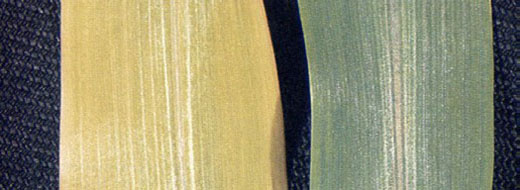
Kimat’s proposed solution:
Microelement deficiency – Molybdenum (Mo)
Molybdenum (Mo) deficiency in maize is rarely reported, but may occur in acidic (low pH) or organic matter-poor soils. In older leaves, there is a mild yellowing between the veins of the lower leaves, similar to nitrogen deficiency, but with a more diffuse pattern.

Kimat’s proposed solution:



